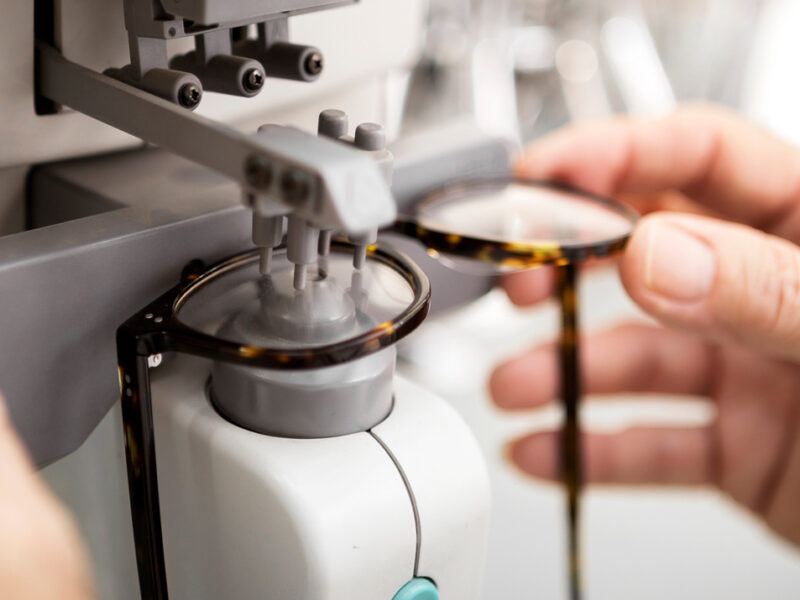How Glasses, Lenses and Contacts are made

How Prescription Glasses and Contact Lenses are Made: Crafting Your Perfect Eyewear
Prescription glasses and contact lenses undergo meticulous manufacturing processes to ensure they provide optimal vision correction, comfort, and style. Read on to learn more about the production of some of the most popular types of eyewear.
Eyeglass Frames
Eyeglass frames come in a variety of materials, styles, and sizes to suit different face shapes, fashion preferences, and lifestyle needs. Frames can be crafted from materials such as acetate, metal, titanium, or a combination of materials for durability and flexibility. Each frame undergoes precision shaping and assembly processes to ensure a comfortable fit and optimal lens positioning.
During the manufacturing process, frames are carefully molded, cut, and polished to achieve the desired design and finish. Hinges and nose pads are meticulously attached to provide flexibility and adjustability for a customized fit. Whether you prefer classic, contemporary, or avant-garde styles, your eyeglass frames are crafted with attention to detail and craftsmanship to reflect your personality and enhance your appearance.


Eyeglass Lenses
Eyeglass lenses play a crucial role in correcting your vision and optimizing your visual comfort. They can be made from various materials, including glass, plastic, polycarbonate or high-index materials, depending on your prescription and lifestyle needs. Advanced lens technologies, such as anti-reflective coatings, photochromic (lenses that darken in sunlight) properties, and blue light filtering, are applied to enhance clarity, reduce glare, and protect your eyes from harmful UV radiation.
The manufacturing process for eyeglass lenses involves precision grinding and polishing to achieve the desired prescription and optical quality. Specialized equipment and computer-aided design (CAD) technology ensure that each lens meets the exact specifications provided by your eye care professional. Whether you need single vision, bifocal, or progressive lenses, your prescription is meticulously translated into lenses that provide clear, distortion-free vision.
Contact Lenses
Contact lenses undergo a specialized manufacturing process to ensure they provide optimal vision correction, comfort, and breathability. Advanced materials, such as silicone hydrogel, are used to create lenses that offer high oxygen permeability and hydration for all-day wear. Contact lens designs, such as spherical, toric, and multifocal, are tailored to correct various refractive errors and meet individual vision needs.
During the manufacturing process, contact lenses are precisely molded and polished to achieve the desired curvature, thickness, and optical properties. Quality control measures, including rigorous inspection and testing, are implemented to ensure that each lens meets strict safety and performance standards. Whether you prefer daily disposable, bi-weekly, or monthly contact lenses, you can trust that your lenses are crafted with precision and care to provide clear, comfortable vision.


Ensuring Fit
Achieving the perfect fit is essential for both comfort and vision correction. Opticians use precise measurements of your facial features, such as your pupillary distance, bridge width, and temple length, to select frames that fit you properly and provide optimal lens alignment. Frame adjustments, such as temple bending, bridge adjustments, and nose pad modifications, are made to ensure a snug and secure fit that stays in place throughout the day.
For contact lenses, achieving a proper fit involves precise measurements of your corneal curvature, tear film, and eye size. Your eyecare provider will conduct a comprehensive contact lens fitting process to select lenses that match your eye shape and provide optimal comfort and vision correction. Factors such as lens diameter, base curve, and oxygen permeability are carefully considered to minimize discomfort and promote healthy lens wear.
